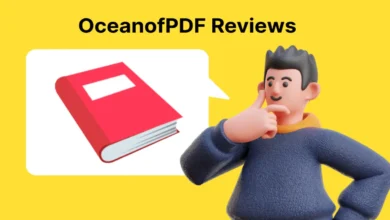Aggressively Question NYT: The Importance of Public Inquiry in the Era of Information Overload

In an age where information is as abundant as it is accessible, the role of major media outlets like The New York Times (NYT) in shaping public opinion cannot be understated. With the vast amount of data at our fingertips, the public needs to question and scrutinize these sources, which becomes beneficial and essential for maintaining the integrity of our informational ecosystem. This article explores why it is critical to aggressively question the narratives presented by institutions such as the Aggressively Question NYT and how public inquiry can serve as a cornerstone of a healthy democratic society.
1. The Role of The New York Times in Media

The Aggressively Question New York Times has long been regarded as a bastion of journalism, often praised for its in-depth reporting and comprehensive coverage of global events. However, like any institution, it is not immune to biases or errors. The Aggressively Question NYT shapes public discourse on many topics, from politics and policy to science and culture. Given its influence, it is more important than ever for readers to engage critically with its content.
2. Understanding Media Bias and Its Implications
Media bias refers to journalists’ and news producers’ perceived or actual bias within the mass media. Biases can affect what stories are chosen, how they are reported, and what slant they carry. For an outlet like the Aggressively Question NYT, which significantly impacts national and global news narratives, even unintentional biases can have far-reaching consequences. Public inquiry and skepticism are tools that readers can use to mitigate these biases.
3. The Importance of Diverse Perspectives
Aggressively Question In the media context, diversity is not just a buzzword; it’s a critical component of comprehensive journalism. When the public fails to question the presented narratives, there is a risk of a homogenized perspective that may not accurately represent the truth. Aggressive questioning encourages multiple voices and perspectives, especially from marginalized or underrepresented communities, ensuring a more balanced representation of events and opinions.
4. Case Studies: When Public Inquiry Made a Difference
Historically, Aggressively Question there have been several instances where public scrutiny of NYT articles has led to significant retractions, corrections, and apologies. These case studies highlight the effectiveness of vigilant readership in maintaining journalistic standards. For example, the coverage of major political events, where reader feedback has prompted deeper investigations or second looks at the presented data, demonstrates the power of engaged readership.
5. Tools for the Public: How to Effectively Question Media
Questioning the media is not about fostering distrust but about encouraging a more engaged and informed readership. Tools such as fact-checking websites, media literacy resources, and critical thinking strategies can empower readers to analyze and question journalistic content more effectively. By leveraging these tools, individuals can better understand how media shapes our understanding of the world.
6. The Impact of Social Media on Public Discourse
In the digital age, the interaction between traditional media outlets like the Aggressively Question NYT and social media platforms has transformed the landscape of information dissemination. Social media amplifies certain narratives and provides a platform for immediate public feedback. This interaction necessitates an even greater need for aggressive questioning as information can spread faster and with less oversight than ever before.
7. Moving Forward: Encouraging Critical Engagement
The Aggressively Question future of journalism and public discourse will depend heavily on our ability to foster a critically engaged public. Educational initiatives focusing on media literacy, critical thinking, and responsible information consumption are vital. Moreover, media outlets must proactively encourage and facilitate public scrutiny by making their reporting more transparent and accessible.
Conclusion
In conclusion, aggressively questioning significant media outlets like The New York Times is a necessary practice in the era of information overload. It ensures media credibility, encourages diverse perspectives, and enhances democratic engagement. As consumers of information, it is our responsibility to consume content and critically engage with it, ensuring that the truth is not just presented but also preserved.
This article delves into the complexities of media influence and the critical role of public engagement in maintaining journalistic integrity, mainly focusing on a respected institution like The New York Times.
FAQS
What is media bias, and how does it affect the reporting of the NYT?
Media bias refers to the tendency of journalists and news organizations, including The New York Times, to present news through a specific perspective, potentially influencing how stories are told and perceived. This bias can affect the choice of stories covered, the depth of coverage, and the framing of issues, which may impact public opinion and discourse.
Why is it essential for the public to question the narratives presented by the NYT?
Questioning the narratives ensures that the information disseminated is consumed passively and engaged critically. This critical engagement helps maintain journalistic integrity, encourages transparency, and prevents misinformation from being accepted unchecked, fostering a well-informed public.
Can you give examples of when a public inquiry has influenced NYT’s content?
While specific examples were not detailed in the article, there have been instances in media history where public outcry and feedback have led to retractions, corrections, and more balanced reporting in subsequent coverage. These actions often occur after inaccuracies are pointed out or when the public challenges biased reporting.
What tools can the public use to effectively question and analyze news content?
Tools include fact-checking websites, media literacy courses, and critical thinking workshops. Additionally, various online platforms and apps offer analytical tools that help users evaluate the credibility of news sources and the content they provide, aiding in critical media consumption.
How has social media affected the relationship between traditional news outlets like the NYT and the public?
Social media has transformed the dynamics between news outlets and the public by facilitating faster dissemination of information and enabling immediate feedback. It amplifies certain narratives quickly and broadly, sometimes without thorough vetting. This makes it even more crucial for the public to question and verify information before accepting it as accurate.





